To say ecommerce has boomed would be an understatement. Global online sales are predicted to total $5.4 trillion in 2022. Consumers in the US alone will take a $1 trillion stake.
To get a slice of the action, brands pivoted their marketing campaigns to focus heavily on the online channels customers were flocking to instead of brick-and-mortar stores. The result? Sky-high customer acquisition and paid marketing costs. Ecommerce brands in the US will be spending $200 billion to compete for customer attention—something already known to be dwindling.
The current state of ecommerce is forcing brands to think about other ways to attract new customers and retain loyal ones. They need to drive down ever-increasing advertising costs and focus on relationships with their customers.
All of this is done through brand building. The goal is to be a customers’ first port of call when they need the product you sell— not catching them by chance through a paid advert.
This guide shares how to bolster your ecommerce brand as we head into 2022 and beyond. We’ll share the changes you need to be aware of and how to prepare for them, complete with examples of brands that have invested heavily in brand marketing—a strategy that paid off.
Table of Contents
- What is brand building in 2022?
- Old vs. new brand marketing strategies
- Brand marketing statistics
- Brand building strategies and best practices in 2022
- Brand marketing: a case study
- Brand building in 2022 and beyond
What is brand building in 2022?
Brand building is the strategy behind building recognition between your products and your customers. It includes everything from the visual identity (consistent brand logos, fonts, typography, and color palettes) for your business through to the values, brand mission statements, and people you want to help.
Strong direct-to-consumer (DTC) brands have become the default merchants for customers who align with their core values when searching for new products. Sustainable sneakers that help the planet? Allbirds ticks the box. Comfortable bras for modern women? Harper Wilde is top of mind.
This brand recognition makes the entire marketing funnel more effective. It’s easier to influence a purchase—even at higher prices—with someone who knows your brand and what you stand for.
If you brand yourself correctly, and your product plus customer service align perfectly with this brand, customers will develop a preference for your company and its products. Moreover, branding helps define what your customers can expect from the company. Meeting these expectations is what leads to the establishment of trust and loyalty between you and your customers.”
—Patrick Crane, CEO of Love Sew
Old vs. new brand marketing strategies
For many ecommerce merchants, brand building fell on the backburner. It was something that came as an indirect consequence of traditional performance marketing. You got brand awareness by spending thousands on advertising, right?
The traditional marketing landscape is changing rapidly. Paid advertising is a lifeline for many ecommerce brands. Granted, it might be more expensive to run these campaigns than to invest in brand building, but for many merchants, it’s the fuel that gets the customer acquisition engine running.
The oversaturation of advertising slots—particularly on social media—means your customer acquisition costs might be feasible for a few months. Expect it to take a greater stake of your profit margins by this time next year, when new brands are competing against you for those already limited placements.
Some brands are seeing ad costs go five times higher than [before] to drive the same amount of traffic.” —Ben Jabbawy, founder and CEO, Privy
If that wasn’t scary enough, consider the looming death of the cookie. Limitations on the data marketers can collect mean 28% of global technology decision makers expect changes to customer data and privacy regulations to hinder their 2022 growth goals (1).
As we head into next year, combat these changes by restructuring your marketing strategy to spread your eggs across multiple (lower risk!) baskets. Depending on your level of brand awareness and short-term goals, it’s generally recommended that you assign 60% of your budget to brand building—the type of campaigns that build associations between your brand, products, and community. The other 40% can go toward short-term performance marketing.
Combined, you’ll achieve both short- and long-term ROI from your performance-based advertising. Brand awareness underpins every touchpoint you have with a potential (or existing) customer.

As advertising becomes competitive, fancy graphics and messaging can only get you so far. The ecommerce brands winning in 2022 use their campaigns to build familiarity and trust. Those who don’t will enter themselves in a race to the bottom: offering customers the lowest price.
Whether brand differentiation is along what the brand stands for, what it represents, the way the product is made, or the way they engage their audience, consumers are looking for differentiated experiences and brands they can connect to. The brands that speak to everyone speak to no one, and they become just a basic part of the background—but not something that consumers really seek out and champion.”
—Morgan Brown, VP of Marketing at Shopify
Brand marketing statistics
Brand is low on the priority list.
Branding tends to rank low on the priority list of marketers who want to show immediate, measurable results. Value can't be seen immediately like in performance marketing—hence why 70% of marketers who are cutting their budgets in 2022 will sacrifice investments in brand building. In comparison, just 13% will cut down on performance marketing known to drive short-term results. But that doesn’t mean the value of brand is nonexistent.
Don’t completely turn the tap off your performance marketing campaigns, especially if they’re working. But the future of advertising is rocky. Reaching audiences on increasingly crowded digital channels is the biggest concern for modern marketers. Strong brand recognition helps your ecommerce business stand out amongst the sea of ads. Investing heavily into brand fuels those performance marketing efforts.
Great branding drives profit.
Despite brand budget cuts, the power of a strong brand is undeniable. Data from LinkedIn proves strong brands draw more organic acquisition, retain more customers, and can raise prices. All three of those levers can be used to increase your bottom line.
Plus, brand marketing caters to both new and existing customers, which can benefit your business 1.6 times more than leaning into prospective customers alone.
Consumers want to buy from brands with shared values.
Brand building works because you’re not competing in a race to the bottom. These days, price isn’t the defining factor for many purchasing decisions. More than half of shoppers are more likely to purchase from a company with shared values. It’s why, in 2022, some 43% of brands are creating products that align with those values (2).
Storytelling builds brand recognition.
You can have the most impressive product in the world, complete with all the bells and whistles your product development team spent hours fine-tuning. But dry facts are exactly that: dry. Customers will struggle to remember the product in a few days’ time.
Storytelling, on the other hand, is 22 times more memorable than facts. It stirs emotion, which is proven to drive more purchases than logic. Our subconscious mind—where the vast majority of our purchase decisions take place—triggers those emotions.
Consumers want stability from brands.
To say the past two years have been rocky would be an understatement. The COVID-19 pandemic wreaked havoc with plans, leaving customers in limbo. As a result, half of consumers expect brands to create stability for them, up 12% from 2019.
Consumers now view brands as a just-as-important pillar of society as educators and friend-and-family networks.”
—Diana Bradley, Adweek
Stability comes through consistency. A strong brand means customers know exactly what to expect from your ecommerce store—from the online experience to availability of products and recognizable homely feel of a known brand.
Brand building: strategies and best practices in 2022
Brand building is set to be more important than ever, especially for DTC ecommerce brands working in a competitive market. It’s one element other merchants struggle to contend with. Here are six brand marketing best practices, complete with examples to illustrate the power of a strong ecommerce brand.
1. Build community around shared values.
Look to any social media platform and you’ll see communities of people with shared interests. Some 1.8 billion people use Facebook Groups every month, for example.
Given their popularity, 40% of ecommerce brands are investing in their own online communities to humanize their brands and increase customer retention. Studies show that communities are a win-win for online store owners: they drive customer retention and brand awareness while also decreasing customer support costs.
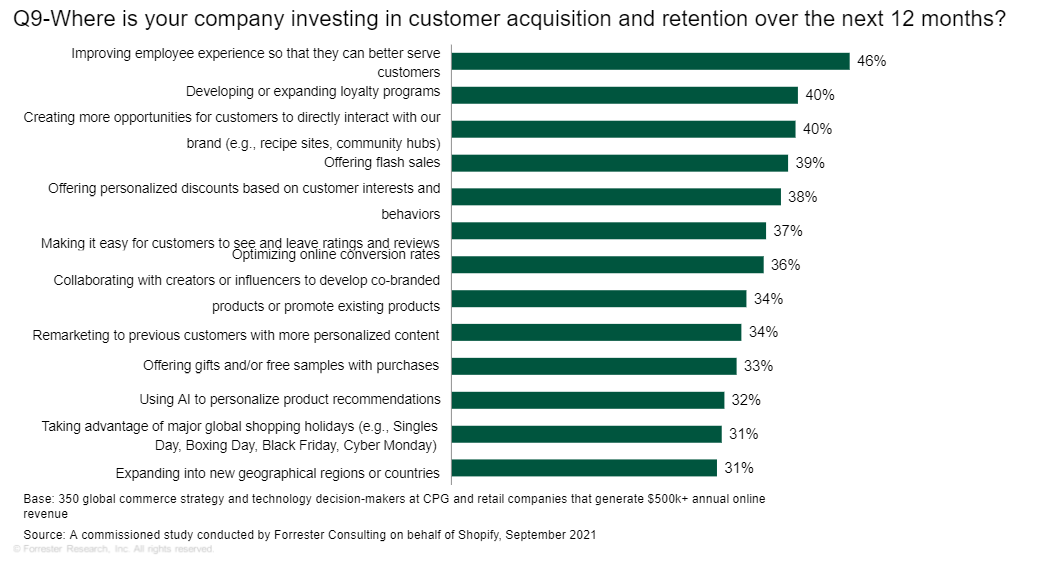
Online communities also help merchants overcome skyrocketing advertising costs. They have the ability to reach potential and existing customers through owned channels.
Some brands have yet to even explore digital marketing or paid advertising because their community is so strong and they spend so much time [building] it that it really drives the direct-to-consumer revenue.”
—Kimberly Smith, National Retail Federation
If that wasn’t enough, investing in a brand community gives you leverage. Community members talk about your products, share photos of themselves using it, and recommend it to friends. This builds a brand loyalty flywheel: you serve your community who then produce user-generated content (UGC) for you to use in return.
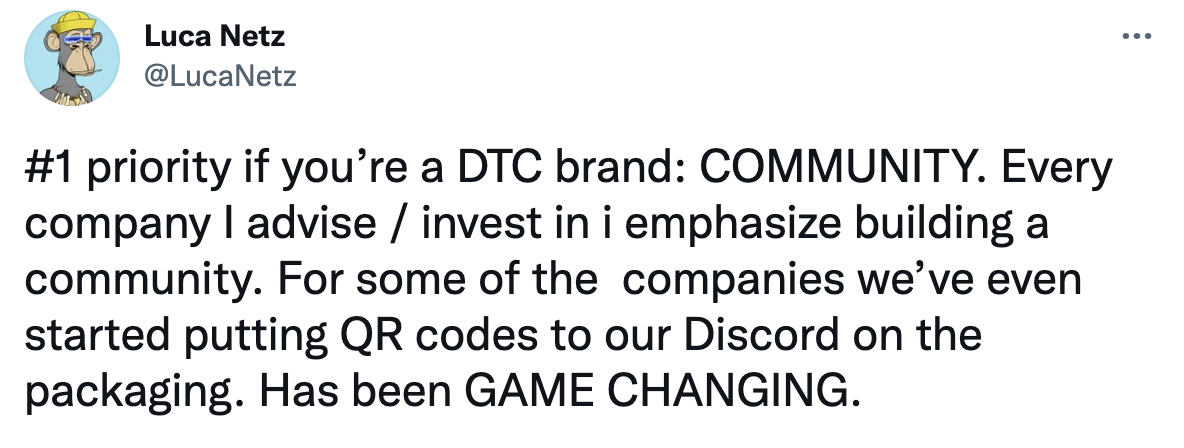
Thinking of creating your own branded community? Instead of ushering people into a virtual room and letting them do their thing unsupervised, have some structure around the content and people you want in your brand community. A successful community has three pillars:
- Shared identity. Whether it’s shared interests or beliefs, prioritize these within the content you push to your brand community. Consumers are more willing to be loyal to a brand if it aligns with their personal beliefs.
- Rituals and traditions. Relaying back to the stability consumers are demanding from brands, let community members know what to expect when they join.
- A sense of responsibility to serve one another. Lean on reciprocity and show your brand is pioneering this community spirit. Give members something in exchange for signing up, such as a donation to a shared cause, lead magnet, or non-fungible token (more on those later).
Aavia is one DTC brand using community to drive brand loyalty. Its hero product is a pill case that pings customers when they need to take their birth control pills. But to get people excited about an otherwise dull product, Avvia has a strong brand message: that hormonal health shouldn’t be a taboo topic.
Aavia shows customers its commitment to this cause with Hormonal House—a Clubhouse community for customers to chat with experts. Its mobile app also has forums with content produced by OB/GYNs. Both of these elements build community and reinforce its mission statement.

2. Deliver delightful customer service experiences.
The experience a customer has when interacting with your brand makes or breaks the commercial relationship you form with them. Some 60% of shoppers say an excellent past customer service experience is a driving factor to influence their purchase decision (3).
Landing on a website, finding a product that speaks to you, and checking out with two clicks is a much more enjoyable experience than confusion. Do I really support this brand? should be a no-brainer question for your prospective customers to answer.
“Branding relies on communication, and to communicate effectively, you have to intimately understand your target audience,” says Stephen Light, CEO and co-founder of Nolah.
“Understanding their behaviors at every level will make it much easier to craft valuable content, and with the specificity that reaches them best. That classic marketing statement remains important: ‘When you speak to everyone, you speak to no one.’ Effective branding depends on knowing exactly who you’re speaking to.”
An increasing number of successful brands are tuning into this idea. Almost half plan to use customer feedback to improve products or customer experience within the next year (4).
Take inspiration from Joel Jeffery, CEO of pyjama retailer Desmond & Dempsey, who says, “That’s the beauty of being mostly online first: you get an amazing amount of information about who your customer is.
“We look at our product as a very intimate product. It's something that you wear around the house or you wear it to bed. It tends to be mostly just the people that you’re very close with and love that see you in it. So we approach most of our customer experience with that in mind, and that plays out across all of our channels.”
Once someone purchases, Joel says Desmond & Dempsey continues the comforting feeling through its unboxing experience: “The approach to it is very intimate: so that’s handwritten notes and getting a physical Sunday paper with your order so you can get the ink on your hands.
“It’s very tactile, and really that is the key theme across all our customer experiences. Both on the website with the unboxing experience and any subsequent emails that you get from us, and then in-store in the popups that we’re doing as well.”
3. Create brand transparency.
We’re entering the era of customers taking back control of their online privacy. Apple’s iOS 15 update changed its tracking framework to give users more control over how their data is shared. One of the biggest search engines, Google Chrome, also announced that it’ll delay third-party cookie blocking until late 2023.
That’s not to say you need to scrap personalization entirely. It’s still key to delivering enjoyable ecommerce experiences. In 2022, 42% of brands still plan to offer personalized product recommendations through quizzes and custom mobile apps, and by using first-party or third-party behavioral data (5).
The way in which brands obtain this data is where the biggest change comes. One study found that 63% of consumers consider how their data is collected and stored before sharing it with someone else—including brands. But when brand transparency is guaranteed, 73% of customers are willing to pay more.
To encourage data sharing, 44% of brands plan to be more transparent around how they use their customers’ information. This includes clear opt-in (and opt-out) messaging in email marketing campaigns.
Brand transparency doesn’t end with data sharing. Some 72% of customers want brands to be positive contributors from society. And they’re willing to pay for it: 71% of purpose-driven shoppers will pay a premium of 37% if the brand is fully transparent and its support is traceable.
Girlfriend Collective tied brand transparency in with societal causes. The retailer pledged “to be a better, more equitable organization”—a promise it followed through on. The brand shared its transparency report via Instagram, detailing the breakdown of its employees and the donations it made to support causes:

4. Build brand loyalty with NFTs.
We all know the value of turning one-time customers into brand ambassadors. Chances are, you already have a brand loyalty program in the works. But with many ecommerce brands offering comparable discount codes for members of its loyalty program, set your brand apart by offering fun and exciting rewards for repeat customers.
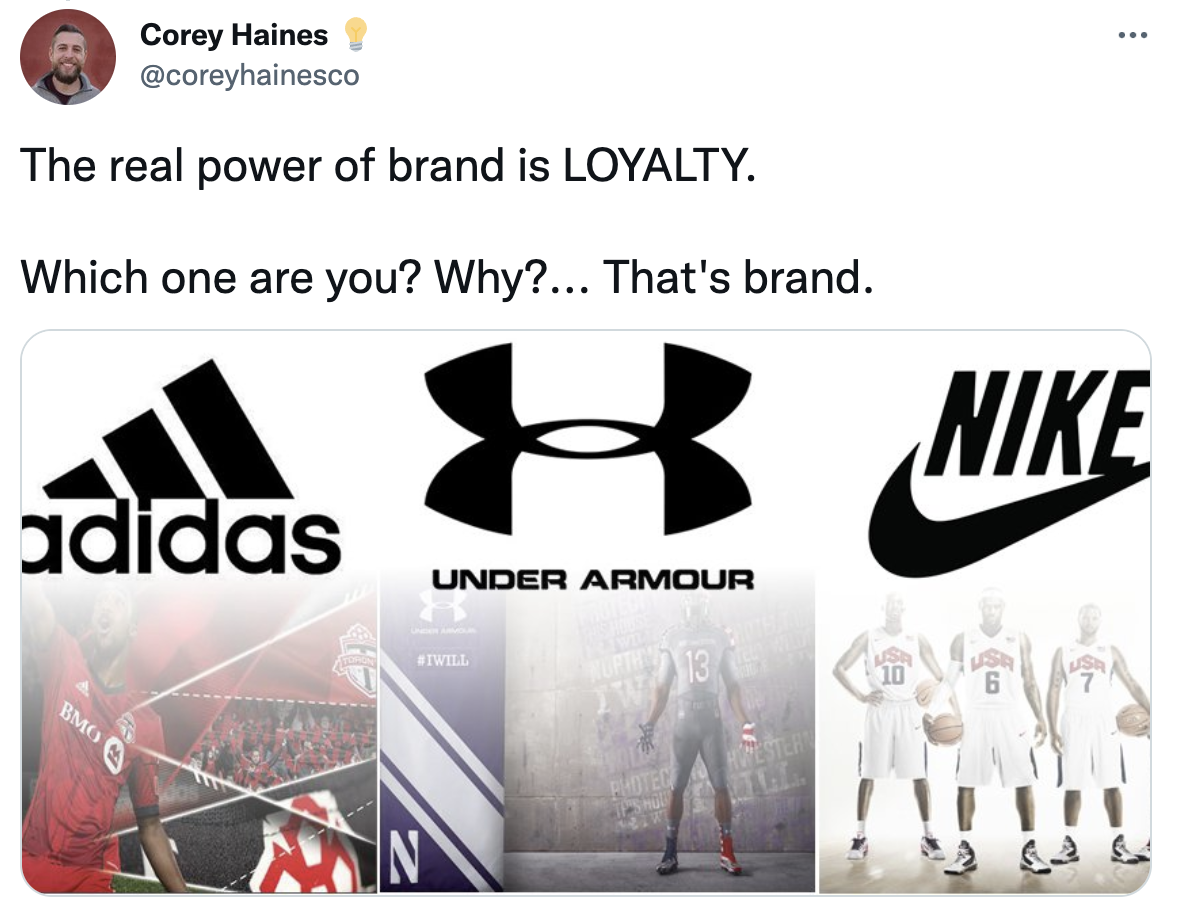
One way brands are doing this is with new technology, including non-fungible tokens (NFTs): digital assets that can only be owned by one person (i.e., a customer.) NFT sales grew 8.5 times between the second and third quarters of 2021 alone, bringing the worldwide total to $10.7 billion.
NFTs tie the physical good with the digital experience in a very unique way that mimics some of the very popular limited-release physical good drops that we've seen [grow] in popularity, and translating that into a scarce asset is really unique and valuable to the communities and their passionate fans.”
—Nicholas Brown, co-founder and managing partner of Imaginary
Superplastic, a DTC brand known for its collectable art toys, is one brand experimenting with NFTs to build loyalty. The brand is building a new flagship NYC store. At some point in the future, Superplastic plans to only allow store access to people who have one of its NFTs.
“It’s the same thing with our website. There will be exclusive entry; things only you’re able to buy,” president and CEO Paul Budnitz says. “Because if you’re willing to make a commitment and join in with us, then we’ll make a commitment back to you.”
NFTs aren’t just products; they’re somewhere between a product and a game and code. If you’re not using all those things, you’re really not using this medium to its full advantage. Over the long term, where it’s going, it’s all about the interactivity.”
—Paul Budnitz, president, founder, and CEO of Superplastic
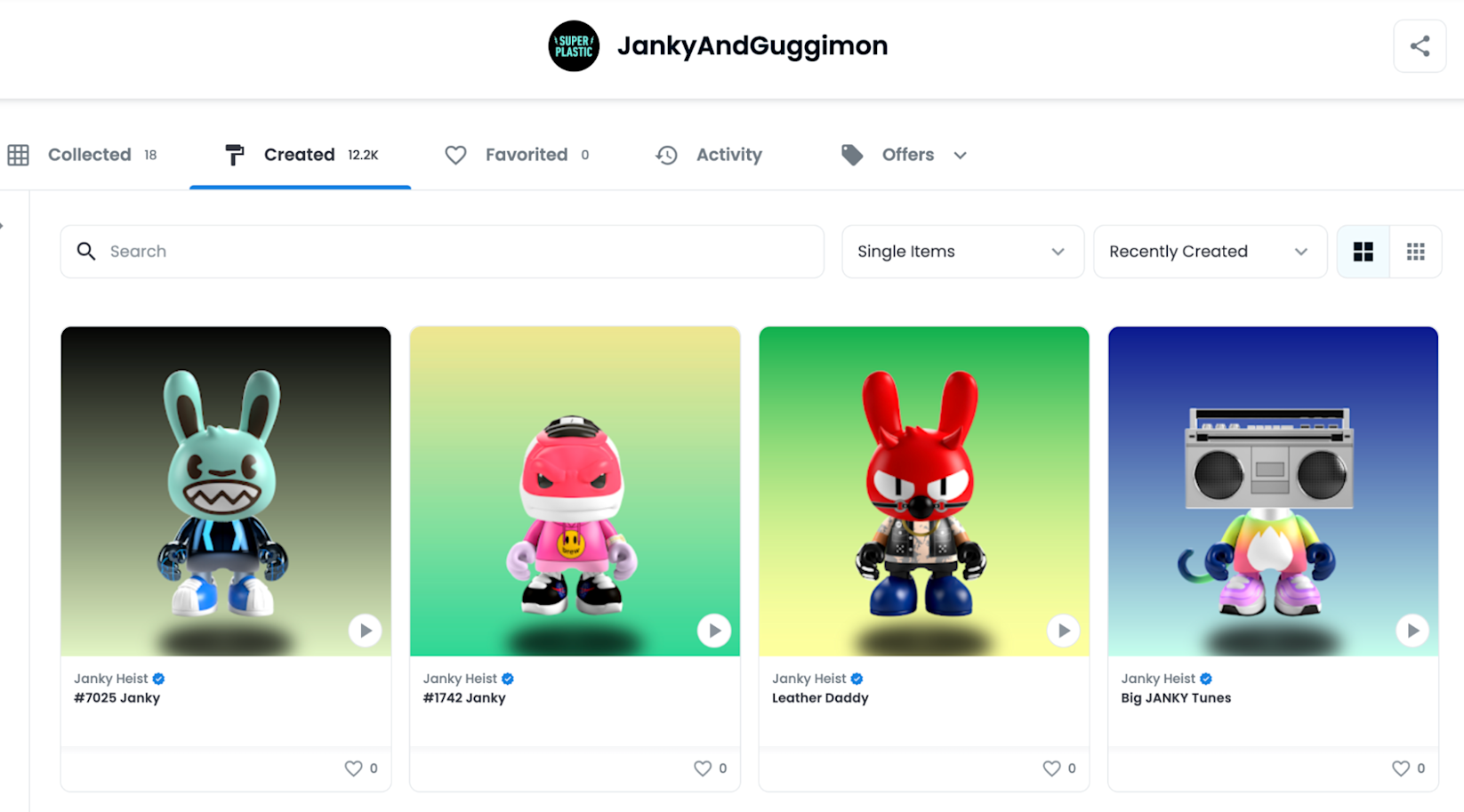
5. Embrace storytelling.
People are wired to love stories. Not only do they light up the sensory cortex in the brain, but researchers also found that the brain “does not make much of a distinction between reading about an experience and encountering it in real life.”
Storytelling helps your ideal customer picture what it’d be like to touch and interact with your product. You’re in complete control over that experience. Describe it vividly and customers won’t want it to end, leading them toward a checkout page with a product confirmation email waiting in their inbox seconds later.
So, what kind of stories should your brand tell? The most obvious is your brand’s origin story and why it exists. Why did you see the need for this product? What problem were you trying to solve when the idea came to life? Answers to these questions build brand identity and differentiate your brand from competitors. Customers buy into the story, not necessarily the product for sale.
There are two shining examples of brand storytelling that show this in action. The first is outdoor clothing retailer Patagonia. One of the brand’s core values is sustainability. Everything the brand touches has this environmentally friendly spin.
Its Worn Wear program, for example, encourages customers to combat fast fashion by buying and selling used items. Shoppers who took part in the program had their stories shared through a short video campaign:
Gymshark is another brand that embraced storytelling throughout the COVID-19 pandemic. Out-of-work personal trainers were struggling with the fact their income tanked almost overnight. It hired trainers from its community to host virtual fitness classes for other customers who couldn’t get to the gym.
We can afford to weather the storm, so we’re really doubling down on brand message and making sure the wider community is being looked after.”
—Ben Francis, founder of Gymshark
The DTC brand also embraced storytelling by integrating it with its branded community. Instagram followers were invited to share a “sweaty selfie” and tag Gymshark. The company made a £5 donation to the National Health Service for every photo shared, raising more than £180,000 to support those in need.

6. Meet the moment.
Time is of the essence when it comes to brand building. Consumer preferences, demands, and expectations are changing by the month. The strategies you used to reach your audience last year are unlikely to carry you through 2022.
Treat this as a time for reflection. How can you show your brand values given the current state of the world? Prove to your customers—both new and existing—that your brand is evolving alongside them.
Take Ilia, the beauty brand that treated the pandemic as a time to ask itself how it could be better. The brand’s CEO, Lynda Berkowitz, says, “The first thing we did was bring in people from outside that knew nothing about us as a brand and that could give us that objectivity. As we were looking in the mirror, we did find some things that we could do better.”
Its branded campaign, Between Us, spawned off the back of this reflection time. Ilia expanded its shade range to make the products more inclusive. Real people model the new line in a TV advertisement, which revolves around connections during a time of isolation.
“For us, it was the perfect opportunity to visually talk about what’s between us right now, whether it’s space or race or distance,” says Lynda. “It’s just an amazing time to be able to communicate our own stories.”
Brand marketing: a case study
Think you’re competing in a saturated industry? Flow Hydration likely tops it. The DTC brand sells bottled water—something US consumers collectively spend $17 billion on, buying more than 1.4 billion bottles of value-add water each year.
The bottled water industry has many big players: smartwater, Aquafina, and Evian dominate shelves in convenience stores. Against all odds, Flow Hydration built an incredibly successful business. A strong brand was its secret sauce.
“The category itself is already pretty crowded,” says Krissie Millan, Chief Marketing Officer. “And for all intents and purposes, water is a commodity. So we really needed to understand what our brand attributes are [to answer the question,] ‘Why do we have this product?’”
Flow Hydration came up with three brand pillars it zoned in on to compete. The first: “It’s a natural product. All of the minerals and alkalinity that you see in the product are all naturally occurring.
“We don’t put anything in the water, and because of the source of our water, it provides its natural taste. We’ve done a lot of consumer testing, and it is the best tasting water in the world. So yay for marketing on that.
“Because of our eco-friendly packaging, sustainability is also a big part of our brand pillar,” Krissie says.
Take a look at Flow’s ecommerce website and you’ll see these elements dotted around the store. The homepage describes its “naturally alkaline water sourced” delivered in “eco-friendly packaging”:
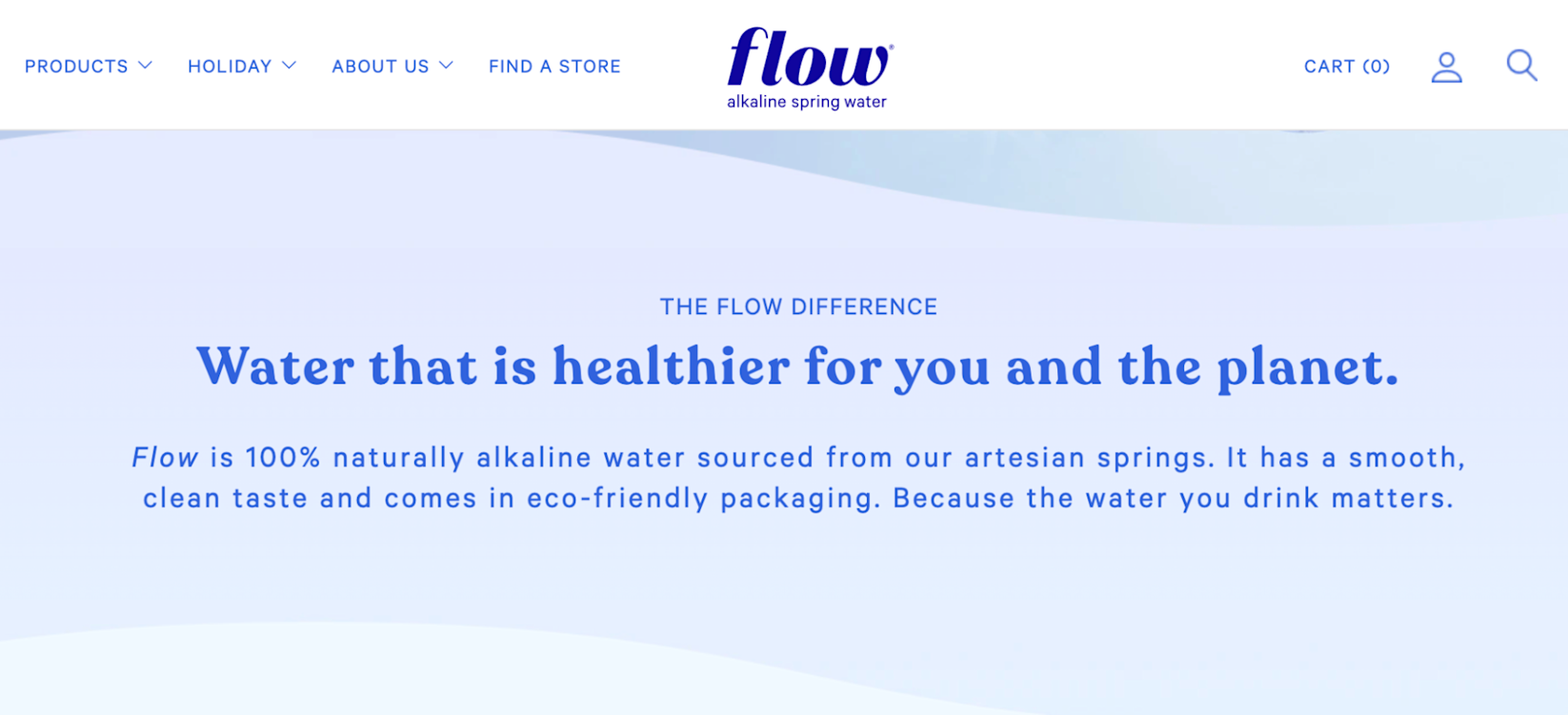
The same brand pillars flow through to its product pages. Its value propositions appear beneath the main product description, telling customers why they should choose Flow’s bottled water instead of a competitor’s:
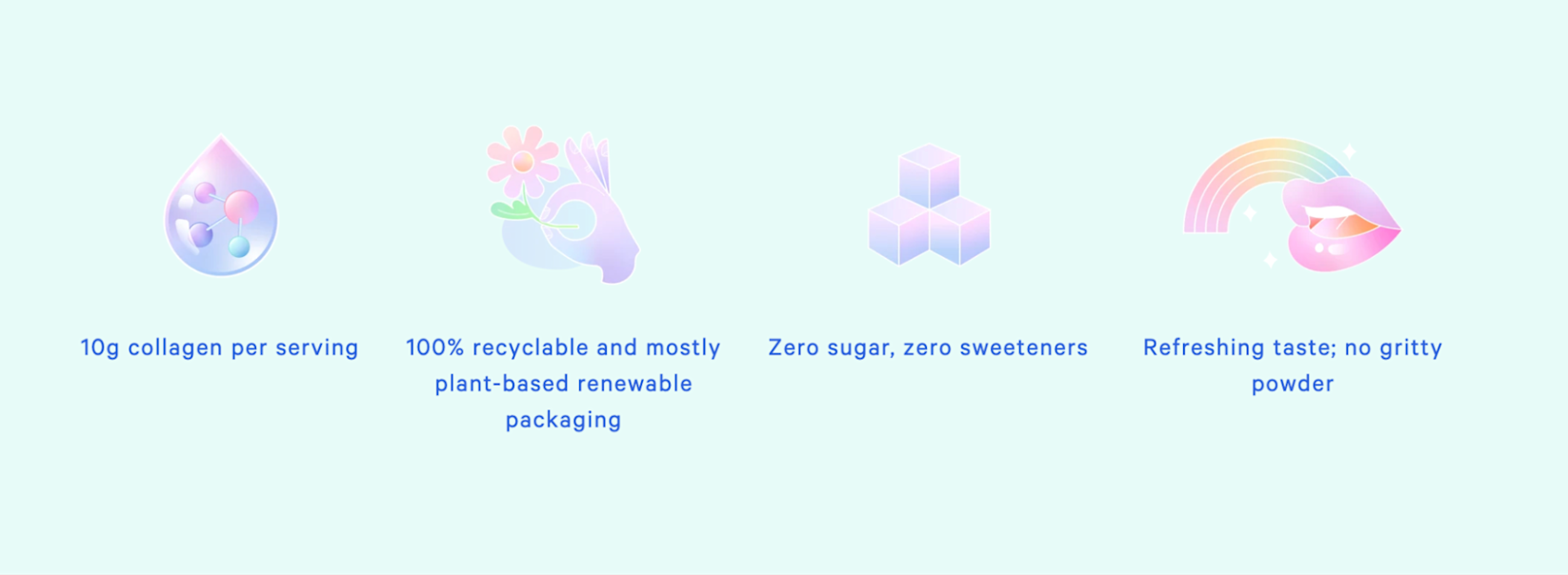
Consistency is crucial to building a strong DTC brand. Flow takes the same three brand pillars—natural products, great taste, and eco-friendly packaging—and displays them across each social media platform its customers use.
This Instagram post, for example, ties in with a themed holiday around one of its core brand values: living sustainably. Customers connect with Flow through these values; they feel like the brand supports the same causes as they do.
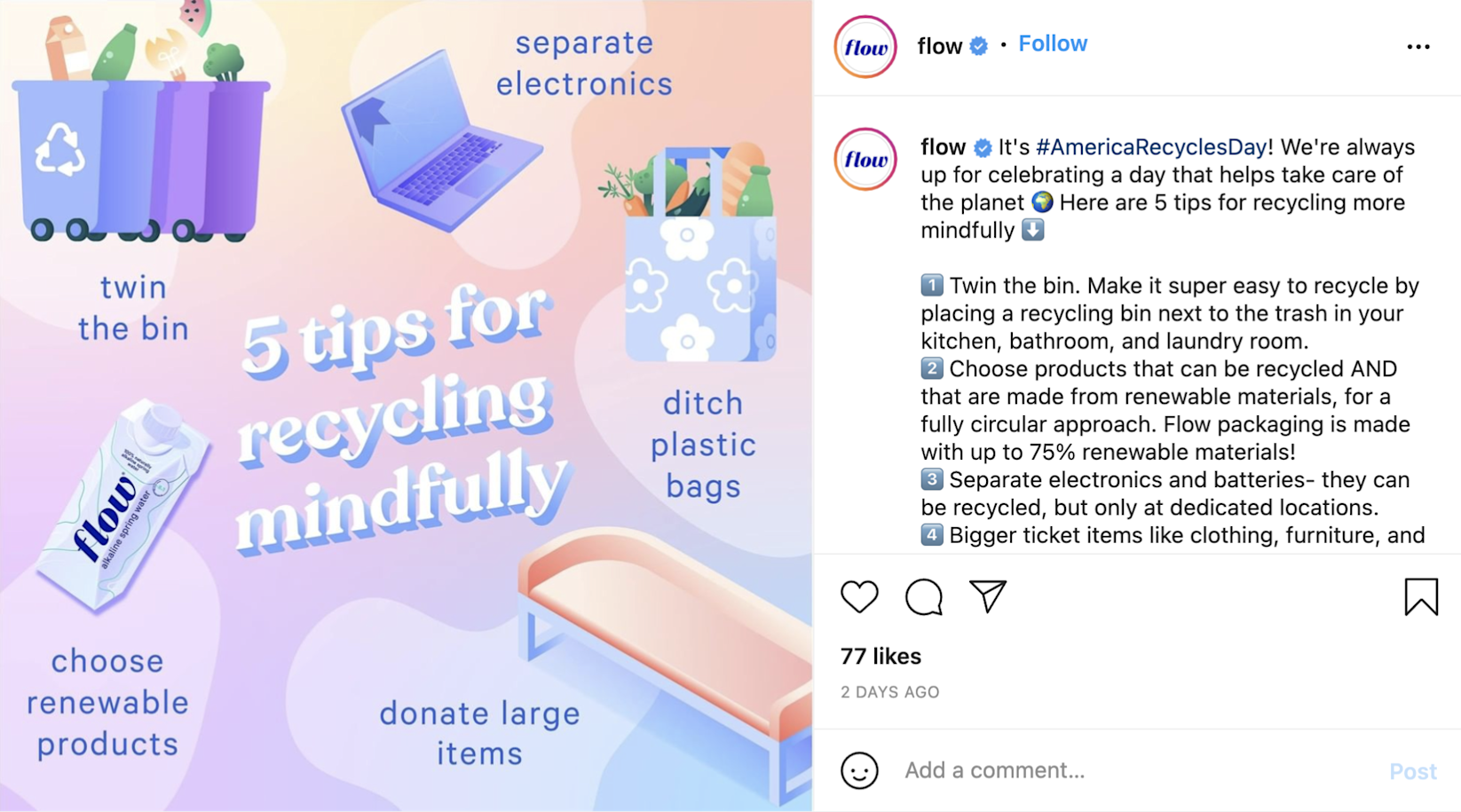
This brand marketing strategy means Flow “started out within the natural channel and we’re making really good strides within that space,” Krissie says. But to go mainstream, “You really have to understand how you can reach as many consumers as you want and make them aware of your brand and who you are and what you represent.”
Brand building in 2022 and beyond
Skyrocketing advertising costs and cheapest price comparisons are unsustainable. Ecommerce brands who fail to take branding seriously risk falling behind.
Follow these steps to future-proof your brand as we head into 2022, a year of customer expectations at their highest. Prove your brand is evolving as your customers are. Reinforce your brand values and prioritize connection. That’s the secret to rising acquisition costs and watertight customer retention.
How can Shopify Plus help?
We know that building a strong brand is a team effort. Every business activity you do needs to reflect your brand values. That’s made easier with Shopify.
Merchants using the Shopify Fulfillment Network are socially responsible. Our code of conduct holds partners accountable to fair pay, safe working conditions, and career opportunities.
Plus, by enabling Shop’s one-click checkout on your ecommerce store, you can prove to customers that your environmentally friendly values are deeply embedded in your brand. We’ll plant one tree for every order made through Shop. (We’ve planted 2.5 million trees to date!)
(1)(2)(3)(4)(5) Shopify eCommerce Market Credibility Study: Data Review, a commissioned Forrester Consulting study conducted on behalf of Shopify, September 27, 2021.
Ecommerce Brand Building FAQ
1. What is brand building in ecommerce?
Brand building in ecommerce is the process of creating a recognizable, trusted identity for your business. It involves creating a logo, “a voice” for brand messaging, and a website that reflects your brand’s mission. It also involves developing an effective marketing strategy to build relationships with customers and create loyalty to your brand.
2. How do I grow my brand in ecommerce?
- Focus on Quality: Quality should be your top priority when it comes to growing your ecommerce brand. Offer products that are high quality and stand out from the competition.
- Utilize Social Media: Social media is essential for ecommerce brands, as it can help to spread the word about your products and build an engaged customer base.
- Invest in SEO: Search engine optimization (SEO) is a key factor when it comes to growing your ecommerce brand. Make sure your website and product descriptions are optimized for relevant keywords.
- Offer Unique Products: If you want to stand out from the competition, make sure you have unique products that can’t be found anywhere else.
- Use Email Marketing: Email marketing is an effective way to reach customers and promote your products. Make sure to use an email marketing service to stay organized and track customer engagement.
- Leverage Influencers: Working with influencers can help to expand your reach and increase brand awareness. Look for influencers who are relevant to your target audience and who have an engaged following.
- Optimize Your Website: Optimize your website to ensure it’s fast, secure, and easy to navigate. Make sure the checkout process is as simple as possible.
- Use Paid Advertising: Paid advertising can be an effective way to promote your products and reach new customers. Consider using platforms like Google Ads and Facebook Ads.
- Provide Excellent Customer Service: Providing excellent customer service is key to growing your ecommerce brand. Make sure customers have an easy way to contact you and that you respond to inquiries in a timely manner.
Read More
- 6 Best Open-Source Ecommerce Platforms for 2023
- 11 Ecommerce Checkout Best Practices: Improve the Checkout Experience and Increase Conversions
- Six Must-Have Technologies to Build the Best Ecommerce Tech Stack
- The Best Business Podcasts For Ecommerce Leaders
- Ecommerce Tech Stacks: 4 Factors to Consider
- The Best Tools to Help You Improve Your Ecommerce Conversion Rates
- How to Choose An Enterprise Ecommerce Platform






